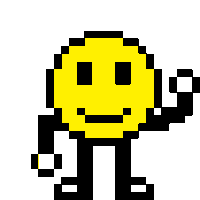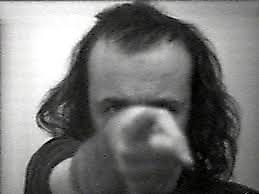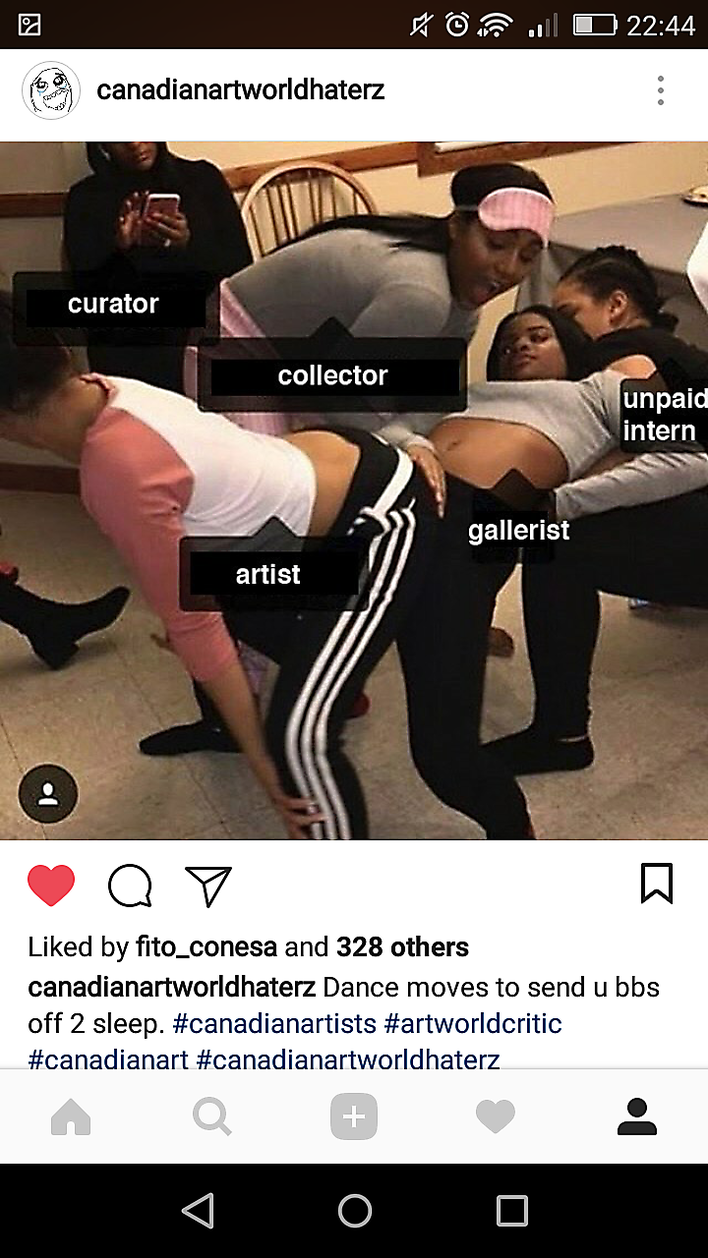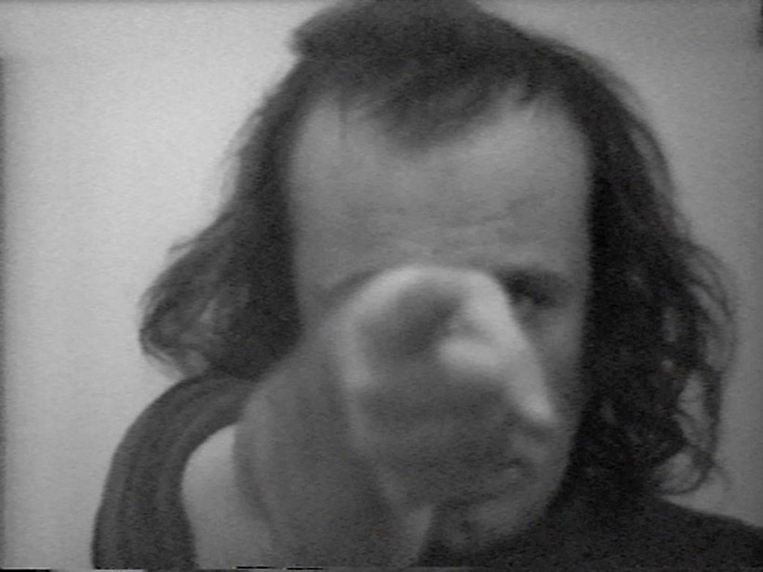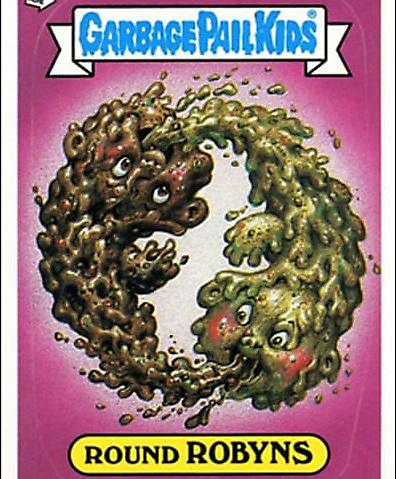Ten Thousand Agencies of Observation
This section examines how meaning is produced through the entanglement of the material and the discursive in Internet-related art practices and the work of Canadian artist Jon Rafman. Here Karen Barad’s concept of intra-action opens new possibilities for analysing an exhibition as the place where the material and discursive entanglements of art practices get real. That is to say, neither the material or the discursive can be understood as distinct entities but rather as existing in their intra-actions; they are “also (the) matter in the sense of mattering or meaning” (Barad 2012). In the case of Internet-related art these relations are troubled by artists whose works playfully activate questions around the material-discursive apparatuses of a medium/technology (Internet) and the physical (the exhibition space). This section proceeds from the post-internet movement and how it interacts with art institutions as places of representation; to this end, I undertake an analysis of the video installations of the artist Jon Rafman.
Karen Barad’s work presents a useful epistemological framework for understanding the discursive and material entanglements that surround the making of art exhibitions. In Meeting the Universe Halfway: Quantum Physics and the Entanglement of Matter and Meaning (2007), Barad analyses how matter comes to matter in the materialisation of reality. She is inspired by physicist Niels Bohr's contribution to quantum theory and, more concretely, his “epistemological framework” defined in the context of technoscientific measurement. Bohr's contribution in this sense lies at the core of his proposal that “theoretical concepts are defined by the circumstances required for their measurement” (Barad 2007, 96). That is to say, any object of observation (i.e. light, fetus, etc.) is inseparable from the agencies of observation – the apparatuses of measurement as well as the social and political conditions in which that apparatus has been produced. This approach to quantum physics, implies that an object of observation and the agencies of observation are inseparable, instead of independent entities. The process of getting to know an object is a phenomena in itself since, in Barad's own interpretation “phenomena are physical-conceptual (material-discursive) intra-actions whose unambiguous account requires a description of all relevant features of the experimental arrangement” (Barad 2007, 197). Objects, processes and agencies of observation do not merely co-exist in interactive relation to one another. They are formed through intra-action. In other words, they are mutually constituted in the phenomena. In this sense apparatuses “are not passive observing instruments. On the contrary, they are productive of (and part of) phenomena”. (Barad 2007,199)
This epistemological framework brings about two key points that are relevant in the case study exposé below: the relationship between the material and the discursive is not a mere friction but a relationship of inter-dependence; further, space is relational – space does not pre-exist any object but rather is created in phenomena when things intra-act. Reading intra-actions between the internet and the art exhibition, allows me to break with the underlying convention of assuming that there are two distinctly situated phenomena – exhibition and Internet – operating in a kind of stalled-yet-interactive relation to one another in space and time. In the following sections these two phenomena are analysed through different intra-actions, firstly around the post internet as artists-led movement, which examines how the online and the exhibition space intra-act and constitute not only new ways of art production, but also presentation and administration. And secondly, through the work of Jon Rafman, where the internet becomes an object of observation, and it is presented/performed, in his video installation, through internet's agencies of observation. Throughout this exposition, the exhibition and the internet intra-act along surfing, working and artistic/cultural loops, but also the ways of seeing and feeling derived from the internet.
Phenomena: The Exhibition / Intra-actions: Surfing, Working and Cultural Loops
The main criticism levelled at post internet art centres on the non-critical position of artists, arguing that their only aim is to find a spot in the white cube where they can photo shoot their artworks and post the images online (Droitcour 2014). This criticism is based on the self-styled avant-garde look of post internet art and the fast spreading acceptance of the term, especially in artspeaking circles and in the art market. However, the post internet cannot be attacked merely on this basis, for such criticism lacks any substance in critical terms, and because such remarks reveal a use and understanding of the Internet similar to the early 1990s [1] . As the work of Domenico Quaranta shows, the historical and technological context of the post internet is notably important. The concept of post internet emerged when the internet was more integrated than ever before in the lives of many (Western) artists. The beginning of the 2000s was the time of the surfing clubs, of wasting time on the internet, of chatting with strangers and of days lounging at home in pyjamas figuring out some meme, joke or even art-work in the net. “After the dotcom bubble and with the arrival of the Web 2.0, the internet started to be perceived less as a medium and more as a key part of our daily lives; less as a utopia to construct together, and more as a dystopia we are all part of” (Quaranta, 2015, 4). Thus, post internet artists used and were interested in the internet as a place to gather with friends daily; as an environment for the distribution and presentation of artists, art or curatorial projects; and as a source from which to collect or copy images, aesthetic styles or behaviour patterns. As Melanie Bühler points out, “in our present era there can be no art that is not somehow connected to or reliant upon the internet” (Bühler 2015, 9).
Medium-specificity did not present as a trend to defend the artistic possibilities of Internet art, as happened with net.art in the 1990s, but was rather a symptom of a new way of working and distributing art, as well as a new approach to a material culture touched by the unavoidable presence of the digital world [2] . The 2000s’ dynamics between digital technologies and art production were partly a consequence of the general economic and labour situation of the cultural sector. This is what Jennifer Chan called the “anxiety of internet art”, the illness of FOMO [3] that comes with self-employment. Infused with this malady, internet art became both the context and the reason for limiting the where-and-how of Internet-related art exhibitions. While museums and galleries might have an interest in “physical versions” of Internet artworks, the online exhibition (either constituted as exhibition itself or as artwork) tended to be initiated by independent curators or artists with self-funded projects. This dynamic opened up new channels for art production and exhibition, questioning existing avenues. Even though the contemporary art agendas of museums, galleries and curators in the Western world have, in the past ten years, increasingly showed interest in Internet-related art as matter for exhibition as well avenues for research into the historical roots of digital art and as modes of conservation, it is much more remarkable how the post internet coincides with what artist Brad Troemel calls the emergence of “Dual-Sites”: exhibition spaces that do not have a space, that either function on the internet or in random travelling places – ranging from institutional ones to a house, a bar or a park. Dual Sites provide not only temporary locations for artworks and artists outside conventional art galleries. These sites also provide a network that feeds itself through the events, information and artworks that find a mode of existence online. As Facebook events, online exhibitions and website links can fill out an artist’s CV and extend the artist’s career. As pointed out by Quaranta, this is not the end of the critic but a new form of working, and perhaps a new way of being critical too. In their Introduction to net.art (1994–1999), Natalie Bookchin and Alexei Shulgin, named these dynamics as cultural loops:
2. Interface with Institutions: The Cultural Loop
a. Work outside the institution
b. Claim that the institution is evil
c. Challenge the institution
d. Subvert the institution
e. Make yourself into an institution
f. Attract the attention of the institution
g. Rethink the institution
h. Work inside the institution [4]
The limits between the digital and the physical merge in new dynamics – not only for art production, but for art presentation as well: that is, these dynamics function both as a working principle and as a way of rethinking the institution. Criticality is not produced through a specific form of signalling differences or creating awareness, but in the form of re-negotiating spaces and how to work with them, outside or in-between them. In this sense, the exhibition becomes the point of inflexion for all these dynamics. It is in the exhibition where the Internet-related art either “materialises” in an art space – re-installing Internet-based art in the context of a space, which gives a new dimension to the artwork since it confronts the need of a “materiality” (paint, sculpture, performance, etc.) or a display in order to “exist” – as well as disseminating art throughout the Internet in the form of websites, posts, memes or clubs. The work of Jon Rafman falls within the frame of these dynamics, despite Rafman positioning his video installations as cultural microcosms [5] that re-enact the internet experience.
[1] The term post internet was coined by artist and co-founder of Nasty Net Marisa Olson in 2006, and many artists such as Gene McHugh, Artie Vierkant, Guthrie Lonergan or Jennifer Chan, continue thinking through the concept and the dynamics around it.
[2] Curator and critic Domenico Quaranta talks of Internet-related art as “the mutant gene in the DNA of art today” – a body of art that brought a new future for art since it bridges integration and autonomy; museum collections and public domain, Artforum and 4chan. Quaranta, Domenico, “Internet State of Mind: where can medium specificity be found in Digital Art?” in Cornell, Lauren and Halter Ed (eds), Mass Effect: Art and the Internet in the Twenty-First Century, The MIT Press, 2015, 425–436.
[3] Fear of missing out: “This is the anxiety of internet art: if you stop contributing, you will be forgotten. Participate to relieve the fear of missing out, and the loss of meaning and agency over self-representation” in Chan, Jennifer, “Notes on Post-Internet”, in Kholeif, Omar (ed.), You Are Here: Art After the Internet, Space, London, 2014, 114.
[4] Loreto Alonson also refers to this phenomena, calling it "artistic loops". "Artists associated with the postinternet trend propose a loop of contents that circulate the platforms that constitute a global popular culture, digitally installing them onto electronic artistic platforms, and materially installing them in galleries and public spaces. Just as significant as the rematerialisation of virtual objects is their recommodification in renewed channels of the art market". Alonso, Loreto, 2016, "Artistic Loops in Environment Memory", in Re-Visiones #6, 7. Available here.
[5] As Artie Vierkant points out: “The goal of organizing appropriated cultural objects after the Internet cannot be simply to act as a didactic ethnographer but to present microcosms and create propositions for arrangements or representational strategies which have not yet been fully developed” Vierkant, Artie, 2010, “The Image Object Post-Internet”, 8. Available here.
Phenomena: The Internet / Intra-actions: Surfing, Seeing and Feeling
The Internet, in the work of Jon Rafman, intra-acts as a source of cultural objects and dynamics, which he appropriates and then turns into apparatuses that, as I will argue below, re-think the Internet as a carrier of agencies of observation that constantly make and un-make social realities. Rafman's work is constantly referencing and speaking to these agencies of observation by indicating how they construct our reality in a strategic move similar to ethnographic cinema or film essay. Rafman has declared his admiration for this kind of cinema and he has been called the ethnographer of the Internet for the way he uses and works with images, videos and text from the Internet. However, whilst in the context of documentary film making these strategies can range from uncovering the cinema set in the film to direct allusions to the way of filming within the film itself [6], Rafman creates installations that make the body re-think its position towards an image – his installations reference, re-create and create, not just the sensory feelings, but also the anxieties generated by looking at a screen.
In 2016, he had a solo exhibition at Stedelijk Museum in Amsterdam titled Jon Rafman: I have ten thousand compound eyes and each is named suffering. The title comes from his video Erysichthon (2015) and it seems to allude to the insatiable need of seeing despite the ambiguous pleasure/pain this desire produces by referencing the myth of Erysichthon (in the myth, Erysichthon is punished with a hunger so insatiable that he eats himself). The title of this exhibition also recalls his work The Nine Eyes of Google Street View (2008-ongoing), a series of images captured from Google Street View. The nine eyes refer to Google's hybrid electric automobiles equipped with nine cameras on a single pole for portraying the world. In his search, Rafman found more than contemporary landscapes: he encountered landscapes “interrupted” by people as well as weird situations that were not the priority of Google Street View. He was interested in how the automatic vision of Google could not avoid the presence of humanity, imperfection or weird and sometimes illegal situations. By pointing to these images, he also points to the agencies of observation of automatic vision and how reality gets real within or despite Google’s eyes.
For the exhibition at the Stedelijk, Rafman became the eyes and re-created the experience through his video and installation work. Since what was presented in the video was curated and edited by him, Rafman himself became a sort of Google-like artist. For me, Rafman's work, insofar as it consists of curating Internet culture and rendering it accessible via the art exhibition, fits with Google's aim “to organize the world’s information and make it universally accessible and useful” (Roubert 2010, 5) [7]. As Artie Vierkant points out, “artists after the Internet thus take on a role more closely aligned to that of the interpreter, transcriber, narrator, curator, architect” (Vierkant 2010, 8). In this sense, Rafman’s aim is not pedagogic per se, rather he seeks to “constrain” the agencies of observation over certain areas of cultural context within the Internet. This strategy is similar to what Erin Manning and Brian Massumi call “enabling constraints”. Manning uses this term to define her own participatory installations in which she plays with mobile architectures: enabling constraints are “not about creating an ‘easy’ space, but about crafting an ease of entry into a complex environment itself always under modulation” (Manning 2015, 8). Even though Rafman’s installations are not mobile, they activate the Internet as a relational composition, and with the intention of “moving experience beyond the way it has a habit of taking” (Manning 2015, 7). For example, when Rafman makes the spectator watch a video through the hole in a massage chair, he is enabling constraints of vision and recalling the bodily experience of watching a screen.
In order to understand how he enables constraints and what that means, his video installations need to be understood as moving away from cinema-set style installations. Rafman's video installations are more like the “sculptural theatres” of Ryan Trecartin, although their works are radically different. As Michael Wang points out regarding Trecartin's sculptural theatre: “Medium translation loops back on itself (from digital to sculptural to digital)” (Wang 2015, 404). And something of a similar loop logic happens in Rafman's installations. For example, while watching and experiencing his work Still Life (Betamale) (2013), in which there is a fox sinking into mud in one of the videos, we sink into a ball pit. This is a mirroring effect that delves two aspects of the Internet that Rafman explores with his work. One is his interpretation of the ambivalent experience of surfing the Internet – something between a playground and hell, a theme that is repeated in many metaphors throughout his videos – for example: in scenes in which we see people dressed up and bound hand and foot, trying to move while a phone vibrates somewhere close by; or when we witness a washing machine self-destruct because it cannot stop spinning. The apparatus of the Internet is extended to the video installation as a discursive-material arrangement to suggest or to produce a body (the spectator's body) that feels “trapped but happy”, attracted but repulsed (Quaranta 2014).
Another aspect of post internet art, as revealed in Rafman’s work, is the unstable nature of any distinctions to be drawn between physical/real and digital/virtual. Rafman has pointed out his interest in creating “immersive aesthetic experiences” with his installations in order to question how the virtual and the real world intra-act [8] – a question that might have to do with the way he re-creates bedrooms, chairs or beds in a rather non-familiar way. In his installations, he creates environments and objects that resemble elements, colours or shapes that are closer to those belonging to the virtual world experience. Throughout his work Rafman, as mentioned above, reflects on the experience of feeling cosy but trapped in another reality as an Internet experience, and he seems to translate this through: chairs shaped to embrace the person; chairs used for massage; or a bedroom, in a ruined state, as if it were a relic from the past, and the only thing alive is the screen. This is not a game of representation, but a game of experiences, ways of seeing and feeling that disclose both the Internet as an apparatus that constructs not only reality but also the bodily attachments and dis-attachments we go through while on the Internet.
In Rafman's work, the Internet disappears to be replaced by the physical experience of the medium, it seeks to perform and extend what Marshall McLuhan called the “massage” of the human sensorium by a medium. Following Barad, Rafman’s artistic practice makes the object of observation, (in this case the Internet as exhibition object) disappear, replacing it with the activation and experimentation of those agencies of observation that derive from the medium. Thus, not only the discursive of his videos, but the installation of agencies of observation (through, for example, the placing of concrete apparatuses such as a swing-chair or a ball pit, as the context in which the spectator views the video), become both the material and discursive intra-actions of the Internet as object of observation and phenomena. His installations are a game of re-creation of the Internet, through the experiences, ways of seeing, feelings, etc. this same medium produces. The task here is not to make the Internet more intelligible as an apparatus but to ask what the effects of the Internet might be, as an experience. In that sense, the exhibition, as a space in which intra-actions materialise, is at the core of how Rafman's interpretation of the Internet as an ambivalent world comes to matter.
[8] Regarding his piece Mainsqueeze (2014), Rafman says, it “is entirely composed of footage found through my online explorations. The voice over text is a combination of modified quotes from literature, Tumblr, and comments on various message boards. I feel less of a need to create original material from scratch due to the sheer abundance of material out in the world to work with. The craft is found in the searching, selecting or curating, and editing together of the materials pulled from far-flung corners of the web.” Quaranta, Domenico, 2014, "Attraction, Repulsion, Rage", Dismagazine. Available here.
[7] In a review, Mitchell Anderson states: “Rafman’s skill is taking the bizarre and normalizing it, meanwhile forcing the mundane to become mystical. In the finale of his trilogy he levels subcultures and forces the viewer to reassess the difference between the general and the specific. On the internet, any culture we mass consume becomes our own.” Anderson, Mitchell, 2015, Jon Rafman / Erysichthon, Review for Flash Art, September 30. Available here.
[6] I refer to documentary film strategies in which the agencies of observation become part of the film as necessary aspects to question dualities such as subjective/objective, truth/untruth. These strategies might range from Dziga Vertov's Kino-Pravda, ethnographic cinema of Trinh T Minh-Ha or Jean Rouch, to the essay films of Chris Marker or Jean-Luc Godard.
(6) In a critic Mitchell Anderson stated: “Rafman’s skill is taking the bizarre and normalizing it, meanwhile forcing the mundane to become mystical. In the finale of his trilogy he levels subcultures and forces the viewer to reassess the difference between the general and the specific. On the internet, any culture we mass consume becomes our own.” Anderson, Mitchell, 2015, Jon Rafman / Erysichthon, Review for Flash Art, September 30. Available here.

